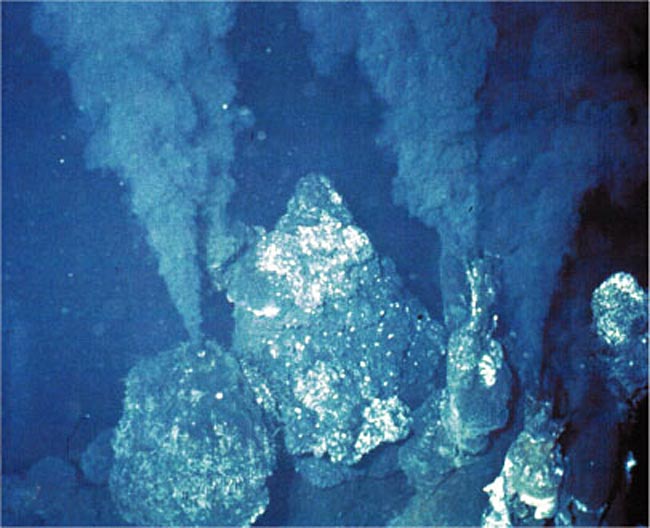New Fossils Support Deep-Sea Origin of Life

Geologists have discovered 1.43 billion-year-old fossils of deep-sea microbes, providing more evidence that life may have originated on the bottom of the ocean.
The ancient black smoker chimneys, which scientists unearthed in a Chinese mine, are 1 billion years older than similar fossils previously identified and are nearly identical to the archaea- and bacteria-harboring structures found today on sea beds.
"These are remnants of the oldest living types of life forms on the planet," said Timothy Kusky, a geologist at Saint Louis University and co-author of a new study that describes the fossils.
Kusky said that the fossils offer "tantalizing suggestions" that life developed near deep-sea hydrothermal vents and not in shallow seas, as other evidence hints.
Black smoker chimneys develop at submerged openings in the Earth's crust that spew out mineral-rich water as hot as 752 degrees Fahrenheit (400 degrees Celsius). Bacteria that don't depend on sunlight or oxygen move into the fragile chimneys that grow around the vents and feed on the dissolved minerals.
"Some people like to call it life in extreme environments. These bacteria pretty much live on a different planet compared to conditions we live in," Kusky told LiveScience.
The stony chimneys can grow more 50 feet (15 meters) tall, but retrieving even a modern chimney sample is extremely difficult, as they're fragile and can crumble when touched.
Get the world’s most fascinating discoveries delivered straight to your inbox.
"This discovery offers scientists valuable on-land samples for geological and geo-biological research," Kusky said, noting that some of the fossils he unearthed measure a whopping 3 feet in length.
The age and size of the chimneys, Kusky said, will help scientists understand how ancient hydrothermal vent growth and the development of life on the sea floor might be interconnected.
Although the fossils may be old, they aren't the oldest evidence of life on Earth. The most ancient specimens are 3.5 billion-year-old, dome-shaped clumps of bacteria called stromatolites, which were found in western Australia and suggest that shallow seas were the birthplace of life.
Ed Mathez, a geologist and curator at the American Museum of Natural History in New York who is not connected to the discovery, said even with stromatolites the verdict on life's origin is out.
"They tell us life existed that long ago, but as to where it originated remains an open question," Mathez said.
Mathez pointed out that black smoker fossils are just as inconclusive about the origin of life , but added that the new finding significantly pushes back the known reign of deep-sea microbes.
"Personally, a deep-sea origin of life strikes me as a very good possibility," he said.
In the end, Kusky said, there may yet be even older black smoker chimney fossils waiting to be discovered.
"So far, these fossils provide oldest evidence for deep-sea life," he said. His team's findings are detailed in the current issue of the journal Gondwana Research.
- VIDEO: Black Smoker Chimney in Action
- The Volcanic Origin of Life
- How Life Began: Research Suggest Simple Approach


